91% of content produced gets no traffic from search engines according to Ahrefs. Yet, marketers continue to create a high volume of new content, often with support of AI software due to a lack of resources or attempt to provide expertise on a topic not in their field. The result is unoriginal content similar to what is already available online.
In response to this, Google’s Helpful Content update focuses on creating people-first content written by people for people. Meaning that to rank on Google, you need to create content with true expertise and in-depth knowledge, as well as provide a satisfying experience to your visitors.
In this article, I will show you some helpful tactics for how to write content for people not algorithms while maintaining good SEO standards using Siteimprove to remain visible on SERPS and drive traffic to your site.
What you need to know about Google’s Helpful Content update
Google started rolling out the Helpful Content update on August 25 and 15 days later, the rollout was complete on September 9.
While this is not a core update like Panda or Penguin, the update was expected to be significant and Google will continue to publish new signals over the coming months. Since the Helpful Content update, we already saw a number of updates rolled out by Google including a core update in September 2022
The update is sitewide, meaning it will affect the overall site performance rather than specific pages and Google won’t tell you which of your content is perceived as not useful. The reality is that Helpful Content update did not affect sites to the extent that was expected and mostly impacted very poor-quality sites and some of those not actively worked on.
Google confirmed that content related to arts and entertainment, online education (including any kind of online tutorials and educational materials rather than formal courses), shopping, and tech are likely to be the most affected verticals.
As of September, the update only affects search results written in English, but Google plans to expand this to other languages at a later stage.
Is your content people-first?
Google provided a lot of helpful information following the update including a blog post on the update, forum and community. The blog post provides a list of questions you can use to check if you are on the right track. If you answer ‘yes’ to the following questions, you don’t have much to worry about and should continue to use these as a checklist for your future content:
- Do you have an existing or intended audience for your business or site that would find the content useful if they came directly to you?
- Does your content clearly demonstrate first-hand expertise and a depth of knowledge (for example, expertise that comes from having actually used a product or service, or visiting a place)?
- Does your site have a primary purpose or focus?
- After reading your content, will someone leave feeling they've learned enough about a topic to help achieve their goal?
- Will someone reading your content leave feeling like they've had a satisfying experience?
- Are you keeping in mind Google’s guidance for core updates and for product reviews?
If you can’t answer these with full confidence, then keep reading to start building truly helpful content.
How to check if your content is helpful
Jordan Koene in the Voices of Search podcast highlights that it is essential for marketers to think about their content more holistically rather than assessing performance page by page in response to this update. This shift in thinking won’t happen overnight, but there are two main actions to prioritize: assessing your intent and processes and ensuring you provide real expertise through high-quality content. Let’s go over some tips for how to tackle these two tasks.
Review your intent and processes
When you assess your approach to content, it’s important to strive for a clear site purpose and audience. You should aim for creating satisfying experiences with real expertise and depth of knowledge that answers users’ needs.
Once you are clear on the purpose of your site and reasons why you are publishing content, look for content that provides no value to your users and remove it. There are specific red flags to watch out for including using extensive automation, -focusing too much on a specific wordcount rather than the objective of your content, creating unoriginal content based on published content, or creating content without having expertise in the topic.
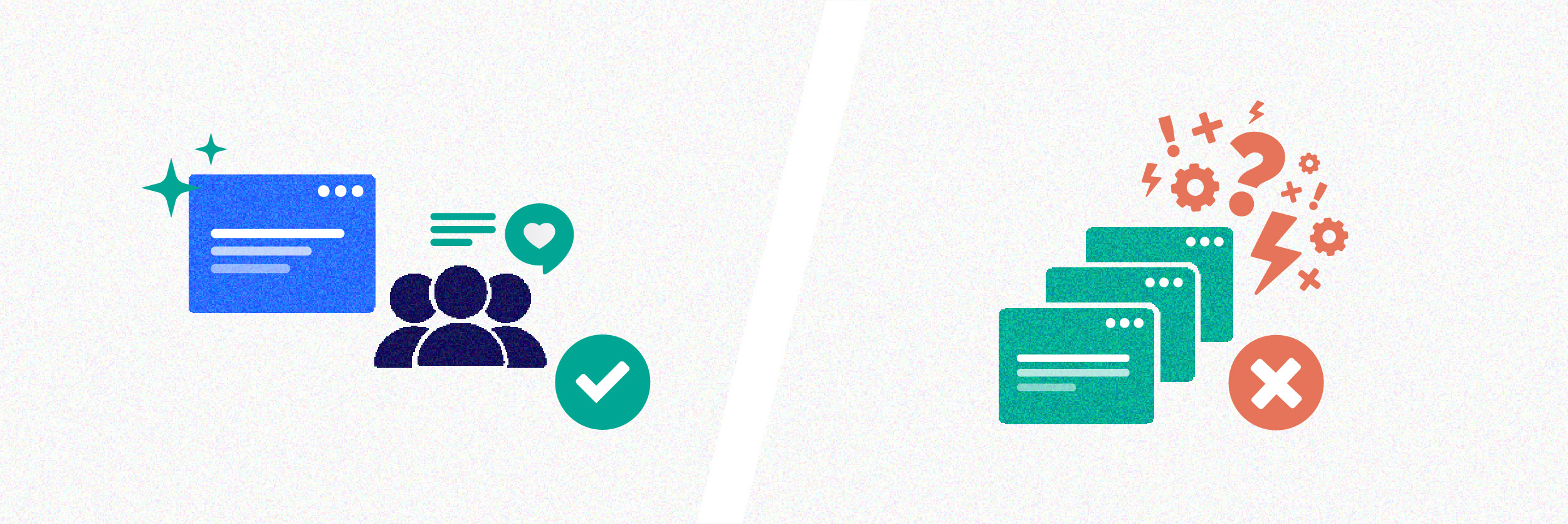
Similarly, Koene suggests that if you are utilizing any strategies often used to rank such as content below the footer, bottom of the fold content, embedded content modules that are not helpful or any other content, delete it.
Once you’ve weeded out the issues, look at the pages that are still performing well and identify positive trends that you can build on. Are specific types of pages getting the majority of your traffic? Are some templates or format types working better than others? If so, you should focus on using these.
Ensure you provide real expertise and better experiences than your competitors
The Siteimprove SEO solution has a number of tools to help you decide were you should focus your efforts based on what users are searching for.
Step one: Pick a topic (and primary keyword) and research closely related subject matters
When you choose your topic, it’s important that you have a clear idea of what you are writing about and why. Start with using Siteimprove’s Keyword Discovery tool to identify what terms you are already ranking for and where you need to improve. Once you have decided on your main topic, use Keyword Suggestions to find related terms. This will provide you with a better understanding of what related queries people are interested in and seek information about.
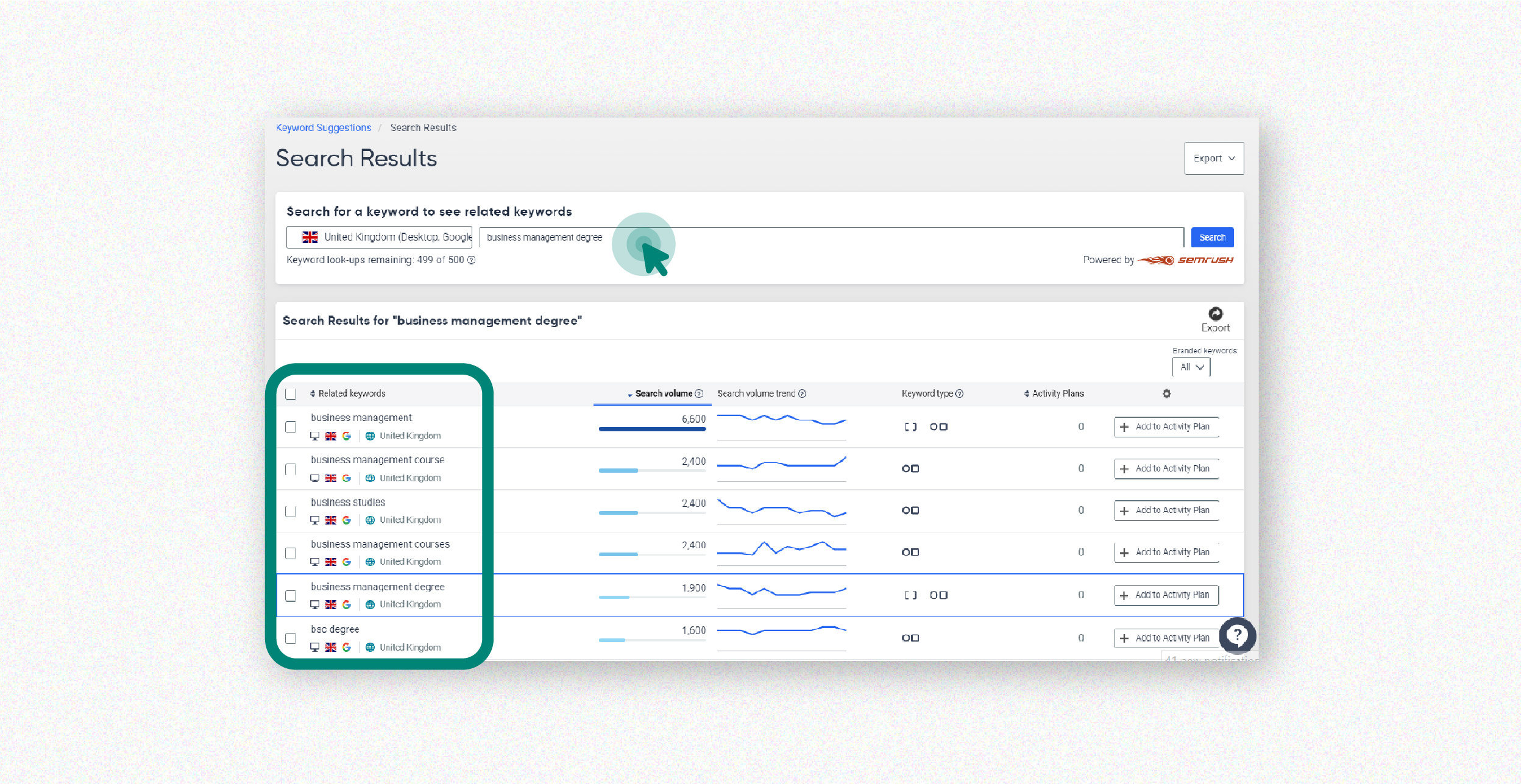
Search again for any closely related keywords and use our keyword mapping tool to establish clear and useful page structure. Clear structure and correct use of heading tags is not just an SEO practice, but is especially important for visitors using screen readers to navigate your site. Keep in mind that the point is to provide clear and logical structure and not stuff your headings with keywords.
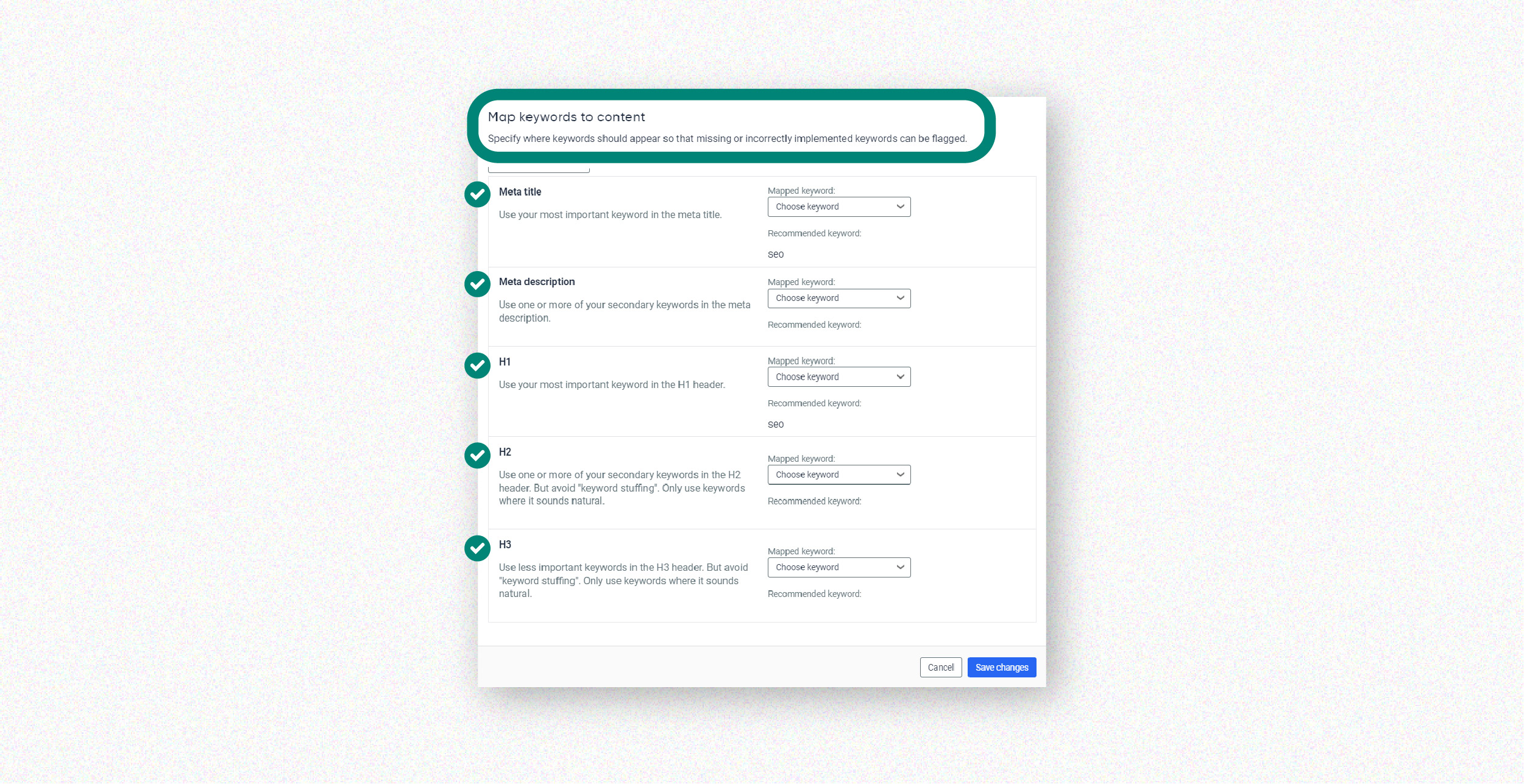
This process gives you an idea what others include when writing about the topic but you should only use SEO tools as a guide that you fill in more substance on the topic through your expertise. Remember, Google expects true knowledge, providing value that is trustworthy, by an author that is an expert in the industry.
Step two: Review to ranking pages for the topic
Once you have your topic locked down, it’s time to research opportunities and gaps. You can use the Siteimprove tool to see top-ranking pages by keyword. Review this content to identify any gaps in your competitor content and take note of additional information that would be useful for your visitors based on your own expertise. Ask yourself: what are the insights and information still missing on the web?
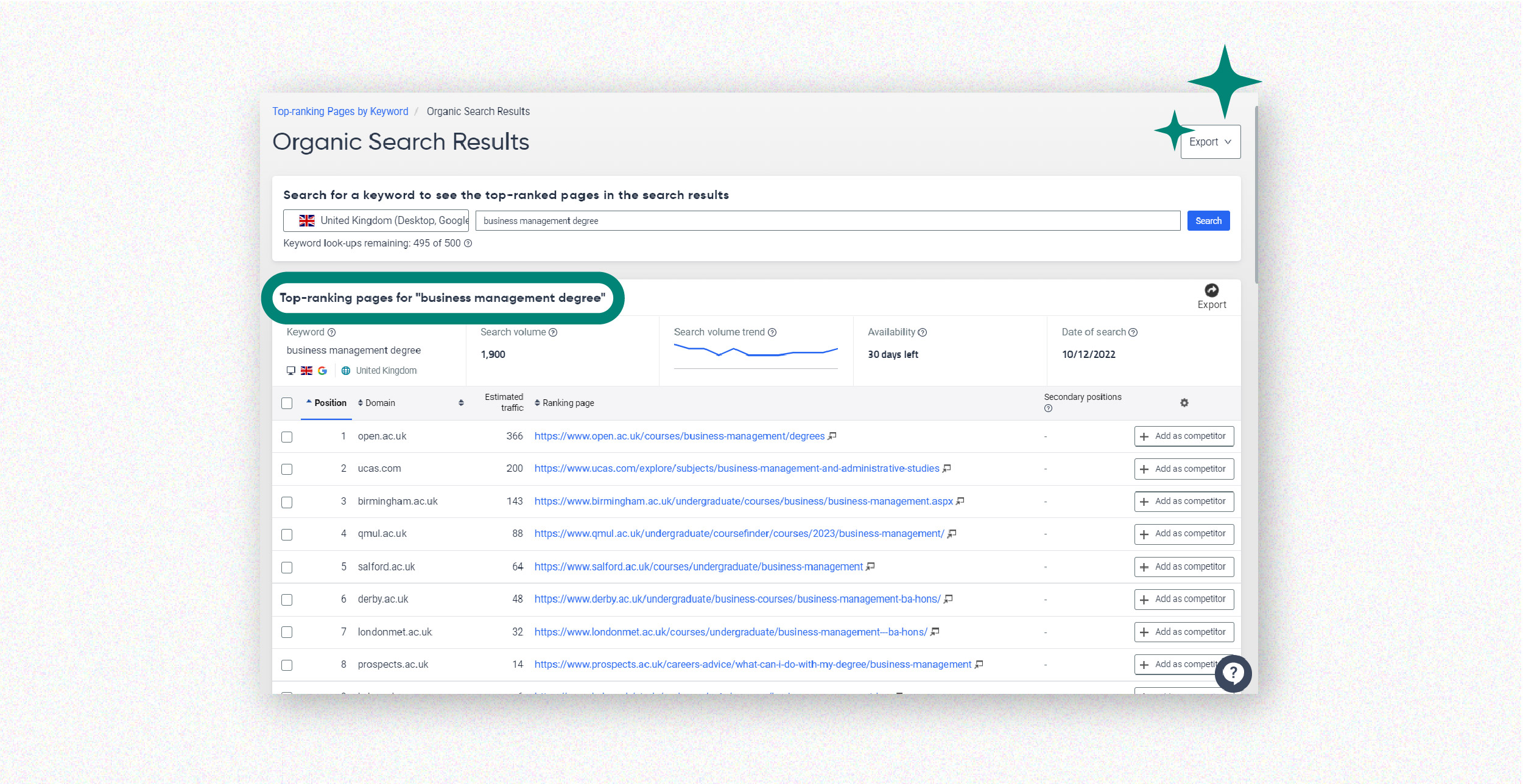
Step three: Produce higher quality content than the competition focused on user objective
The secret to high-quality content is consistent processes in your content production. Before you start creating your content, note down what the main objective of your content is and what questions you are answering. This will help you avoid straying too far off topic during the content creation process and focus on peoples’ needs not search engines.
Once you have your content ready to publish, use the Siteimprove platform to check your readability score. This is important to ensure your content is understandable to users. Next, it’s time to cross check for duplicate content, which you can also do in the platform.
You can continue to monitor your site performance and existing content with Siteimprove, which flags issues and offers details on how to resolve them to ensure optimal user experience.
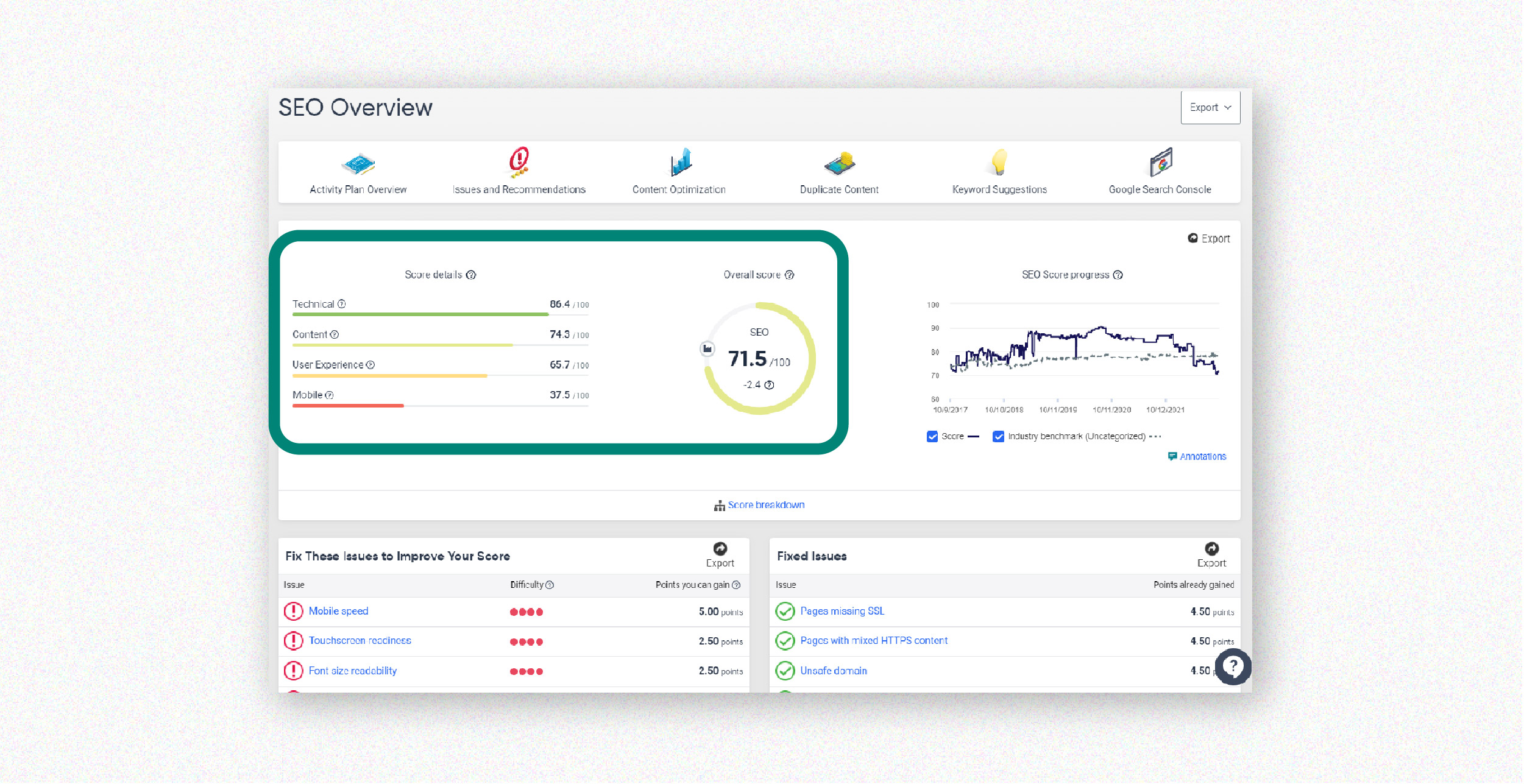
What should you prepare for next?
Google will continue to tweak the signals over the coming months and has already released a number of new updates since the Helpful Content release, so you should make sure you monitor your performance and pay closer attention to your analytics. You can keep an eye on news related to the topic by checking the Google Search Twitter account.
It’s no secret that Google favors people-first content and has for a long while now. This update goes to show that to stay competitive, marketers have to start thinking holistically about their SEO strategy and how it works together with the other elements of their user experience. It’s time to put people first and write for our users, not algorithms. Good luck and happy writing!

